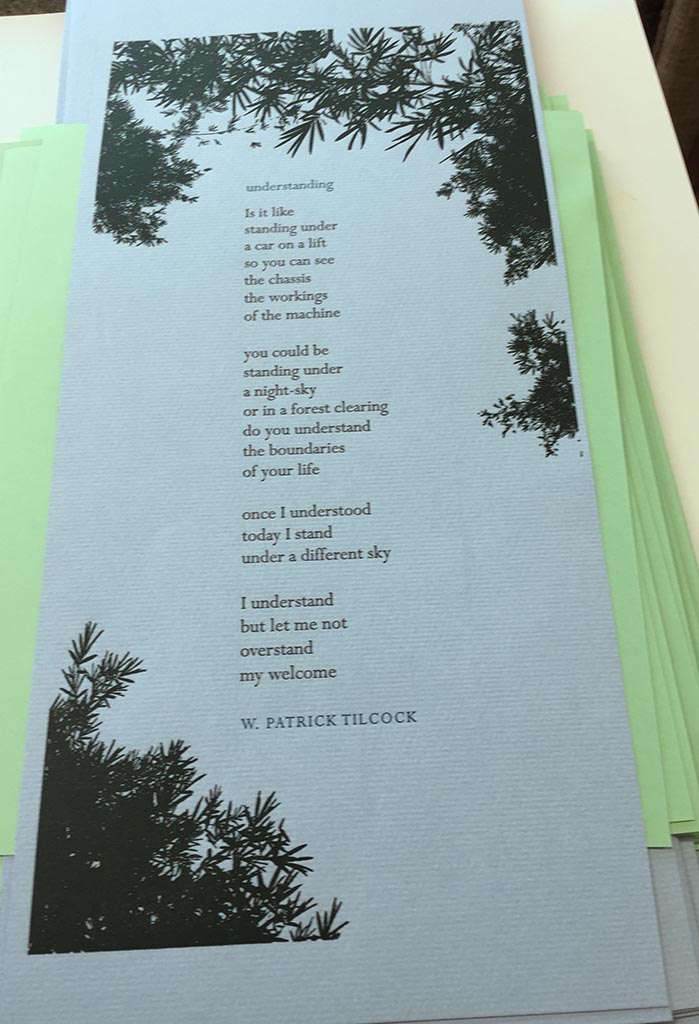Reflections on past work and new work
Sandy Tilcock
October 1, 2020
After the move to Bisbee, Arizona and in the course of remodeling the studio space, I had the press operating as early as July 2019. But the work has been primarily commission projects. It was time to move forward with a lone goose press publication!
Prior to leaving Eugene, Oregon I had been focused on producing major book works: All of Him by Michael Dickman and Matthew Dickman with artwork by Keith Achepohl, and Opening the Mouth of the Dead by Catherine Woodard and artwork by Margot Voorhies Thompson. Margot and I also collaborated on another book, Poking Around, by Kathleen Dean Moore. During the last four months of my time in Eugene, I took on designing, printing and binding Barry Lopez’s Life on the River for the McKenzie River Trust (an edition of 77 copies, 11 in custom built clamshell boxes). It was primarily a work of love, honoring my friendship with Barry and his enduring bond with the McKenzie River. I delivered the books three days before leaving for Bisbee. I was exhausted and overwhelmed by the time we loaded the press and ourselves for our next big adventure.
[McKenzie River/Holiday Farm Fire: During late evening on September 7, 2020, unusually strong winds from the east spread across the Pacific Northwest. In Oregon’s McKenzie River corridor, this caused large fir trees to topple, subsequently downing live power lines. Due to the ongoing drought (one result of climate change) the forest exploded in flames that raced west along the river corridor toward Eugene. Many residents awakened in the middle of the night to a bullhorn blaring “FIRE! GET OUT NOW!” and left with only the clothes on their back. This was true for Barry Lopez and his wife, writer Debra Gwartney, although they did scoop up their cat. While residing in a hotel in Eugene, they waited over a week for the report: Their house stands but they are unable to return and assess the damage due to road hazards. Towns were burned to the ground and loss of life has yet to be determined. While it will take decades for the McKenzie River corridor to recover, the community is close knit, resilient and determined. Once the shock and mourning abates, they will lace up their boots, shoes, Birkenstocks, and rebuild. They will continue to preserve and manage the lands along the river, mindful of new ways to honor the landscape. The Holiday Farm Fire is one of many that have devastated Oregon forests since September 7.]
Right now my focus is to produce works that are smaller in scope, less complex and less expensive. To that end I asked Patrick to share some of his work with me to consider for a small broadside. After reading through the options, “understanding” jumped out at me. As is often the case with poetry there is an immediate interpretation, and once one starts working with the text there are many subtleties revealed.
I opted to employ polymer plates for both the type and image. I explored many design ideas, printing out digital proofs and living with the various possibilities. Once every aspect was finalized, I ordered plates. To achieve what I envisioned, four press runs were required.
Press run 1: The trees printed in green on light blue Hahnemühle Bugra paper.
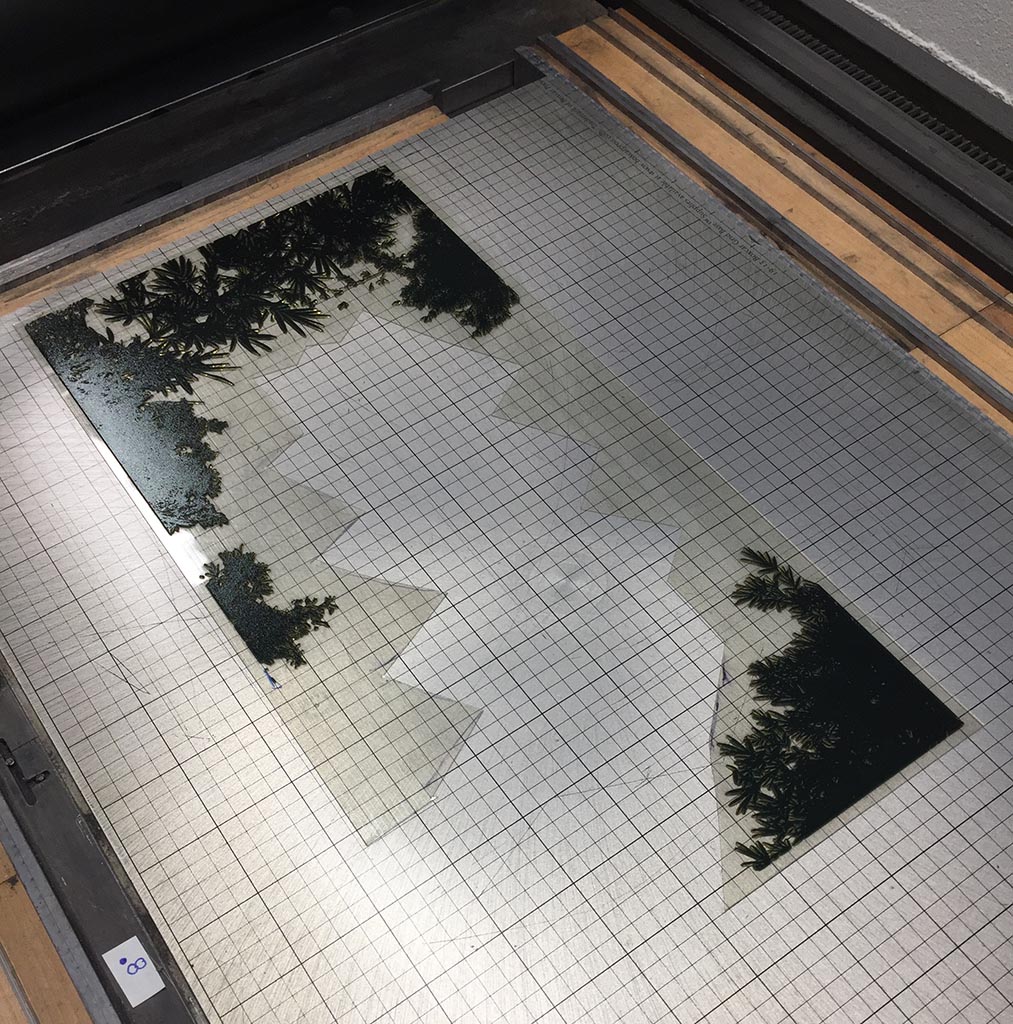
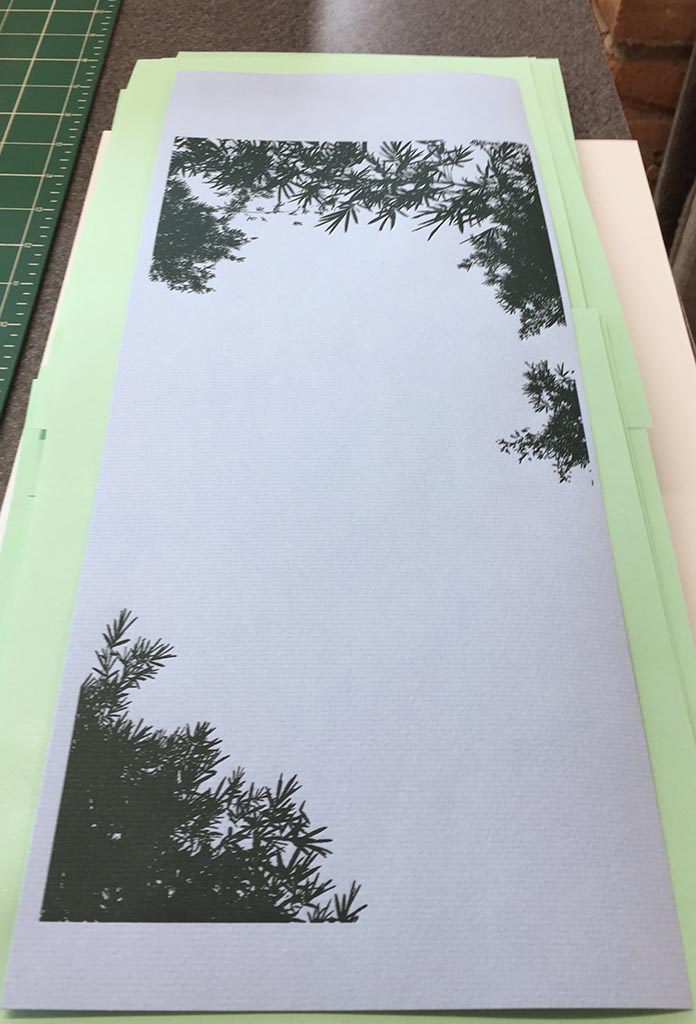
Press run 2: The poem, black ink. There is such magic in setting ink on paper!
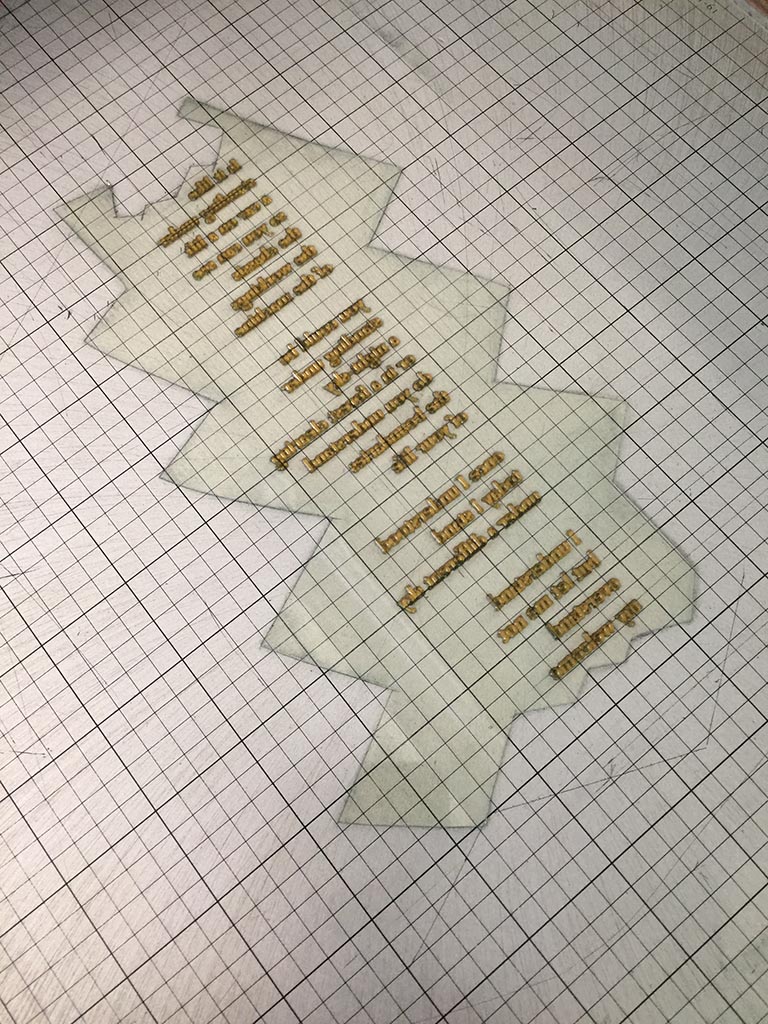
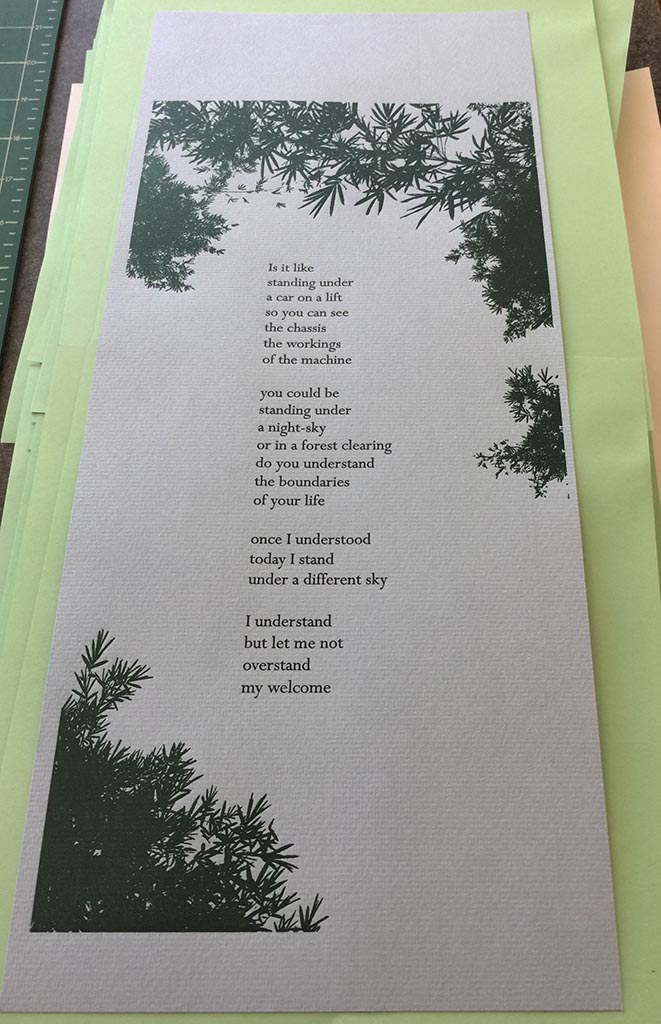
Press run 3: A second color, title and author.
Press run 4: Although the colophon is printed in the same black ink as the poem text, it is printed separately. Because it is set in a smaller point size, it requires lighter inking. Another set-up and cleaning of the press, another 50-odd cranks of the cylinder, but definitely worth the time and effort.
The sheets are trimmed after printing, allowing the image to bleed off all four sides.

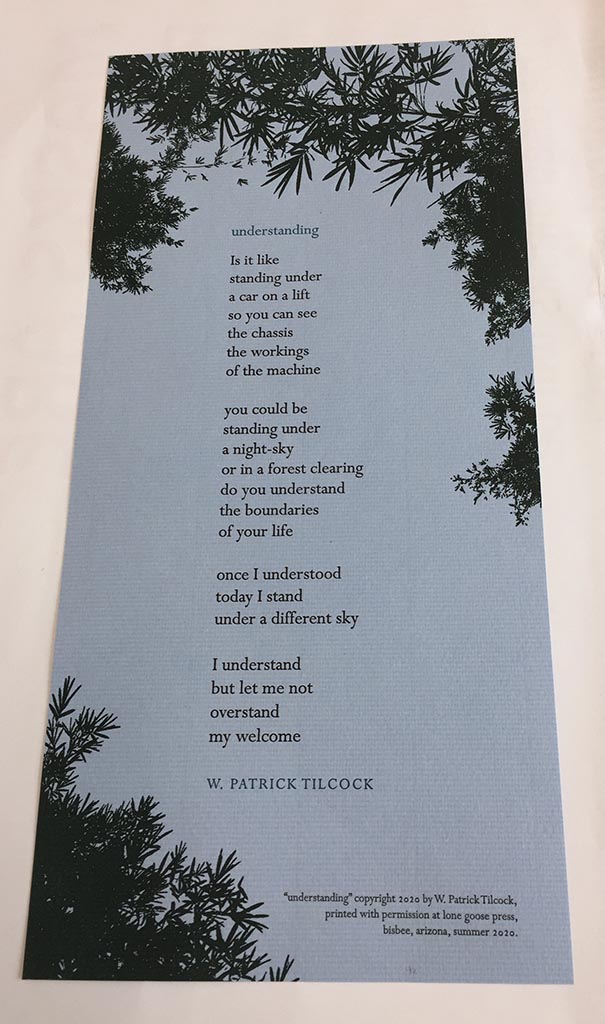
The next-to-final step is quality control—examining each copy for printing flaws and other issues. I then number the edition. Since 2006 I have followed the practice that lone goose press edition sizes are prime numbers—a nod to my background in mathematics.
The final step: The author signs the edition and toasts the completion with the printer.

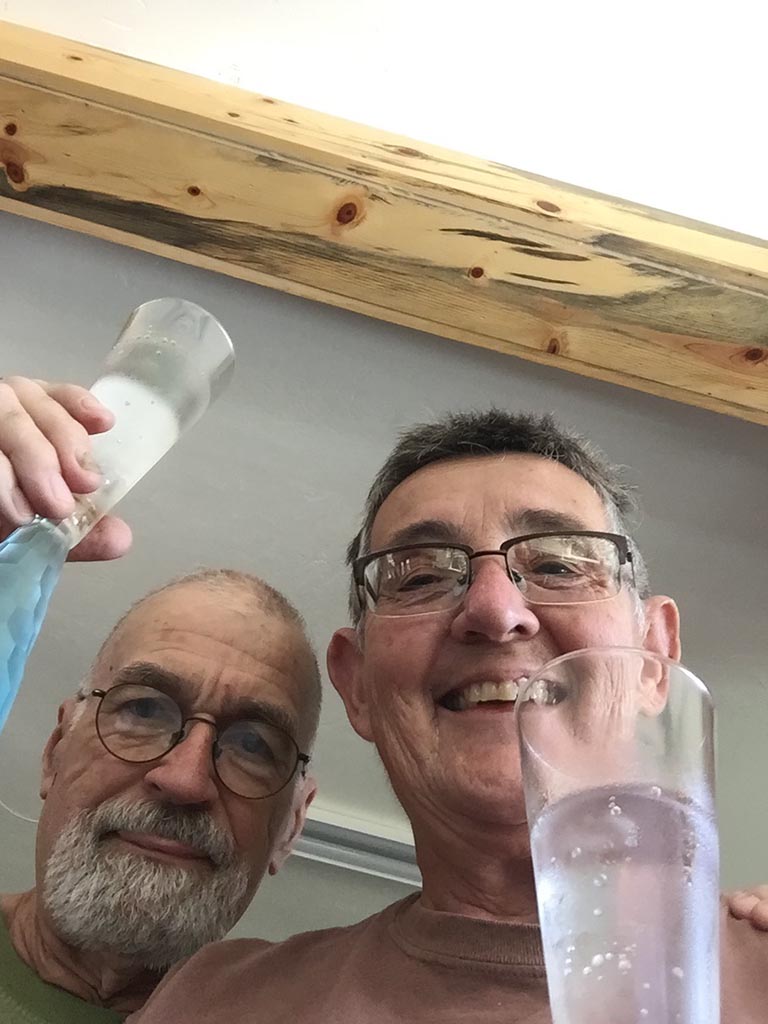
But what about the poem?
Why should one put so much effort and resources into printing it? It’s about honoring words, giving them the same import as visual images. With a broadside on the wall, you walk by and in some manner acknowledge its presence. You might not read it every time, but you occasionally find yourself stopping to read and ponder what it means to you at this moment in time, maybe something very different than previously.
I asked Patrick to share how “understanding” came about. Here is what he wrote:
Early in 2016, the issues and candidates emerging for the primaries and the November general election were much in the news. I was struck by how differently the choices before us were understood by different people, groups and in different regions. In my journal from that time, I wondered about the different words we have for understanding, which might imply grasping, discovery, empathy, among other things. Somehow this turned into a poem four years later.
Note from Sandy: And here we are in another tumultuous election, Black Lives Matter, a global pandemic and economic recession. We all must work to understand our differences to find common ground, and so reclaim the soul of our country.
One of the press’s patrons offered these words upon receiving the broadside:
understanding powerfully compelled me to dwell in reframed thought. It plants a poetic seed that pitted the surety of understanding against the often unexamined reality of overstanding. This work opened my eyes and heart. Thank you Patrick Tilcock. I understand better now.
